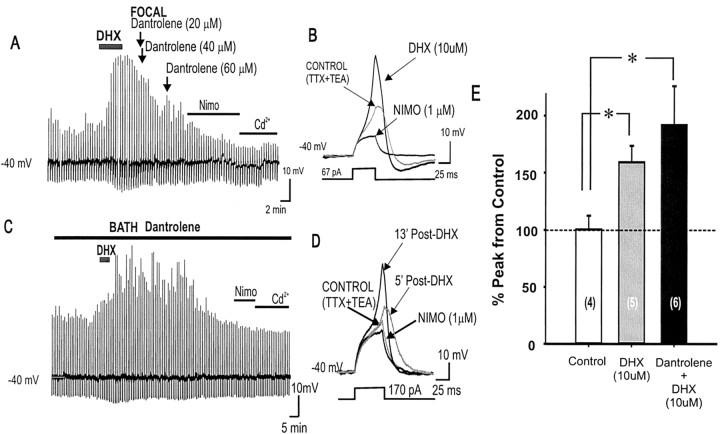Figure 11.
Blocking intracellular Ca2+ release from ryanodine receptor stores by dantrolene does not change the transient D1/D5R-mediated potentiation of the subthreshold evoked Ca2+ spike. A-D, Time course of subthreshold evoked Ca2+ potential in response to DHX with internal Ca2+ release is blocked by either focal (A) or bath application (C) of dantrolene. D1/D5R activation led to a transient increase in peak amplitude and integrated area of the resulting evoked Ca2+ spike, suggesting that release of Ca2+ from internal stores is not required for the potentiation of the subthreshold spike (nor for the inevitable termination of the potentiation). Representative traces are shown for focal (B) and bath (D)-applied dantrolene. Note: After DHX application, the apparent increase in the downward deflection of vertical lines (A, C) below -40 mV represents an increase in the afterhyperpolarizing potential immediately after the Ca2+ spikes. E, Histogram showing that both DHX alone and DHX with dantrolene resulted in increased Ca2+ peak amplitude after 5 min post-DHX application, suggesting that Ca2+ release from intracellular stores is not required for this D1/D5R mediated potentiation. *p < 0.05. NIMO, Nimodipine.

